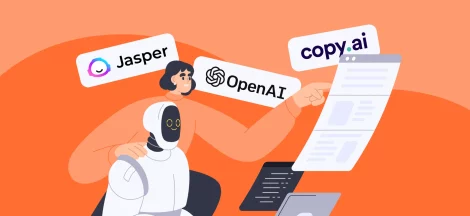Legacy application modernization can be scary, but it doesn’t have to be as difficult as you might think. Fortunately, modernizing your legacy applications doesn’t have to be difficult or expensive and it could actually improve your IT security posture in the process.
This guide will help with the process of figuring out your legacy application’s true needs and how to modernize its functionality so that it meets those needs while still offering the same quality and usability as the original program.
Tip # 1-What Exactly Is a Legacy Application
A legacy application is a piece of software built on older technology with limited features. Most legacy applications were created to solve specific problems, typically from the late 1990s and early 2000s.
However, as technology has evolved, these legacy applications are no longer able to keep up with the demands of today’s society and environment. As a result, many developers have considered modernization as a way to update their applications without having to start from scratch.
Tip #2 – When Should I Convert My Legacy Apps?
It’s best to modernize when you start seeing the performance effects of legacy code. For example, if your application is running slower than it did last month or if it takes longer to load, These are signs that you should seriously consider modernization.
However, it’s also important to realize that not all legacy applications are worth the investment to modernize, and some may be better off being phased out altogether. If you’re unsure whether or not an application needs modernization, ask yourself these four questions:
- What is the purpose of this app?
- Is my organization using this app in other locations?
- Who else depends on this app working properly?
- Is there a business need to upgrade the technology behind this app?
Tip #3 – Consider why are you doing it
While rewriting legacy applications might be the most appealing way to get your company up to speed, it’s not always the best choice. The first step in modernizing legacy applications is to ask yourself why you are doing it. This can be an easy question to answer if you know what you want your organization’s goals and priorities are.
For example, if your goal is to make it easier for developers to update code by moving away from a monolithic application with many interdependent systems, then rewriting would make sense. However, you should also take into account the costs associated with this approach (time, money), as well as any unknown risks that could crop up along the way.
Tip #4 – How do I Begin with Conversion?
The first step in legacy application modernization is finding a consultant with the expertise to do the conversion. This is an important first step as they will be able to work with you on what needs to be done and how much it will cost.
You should also make sure you have a budget set aside, or at least know what size your budget is so that you can find a good fit. Once you have all of this information, it’s time to put together your plan! Begin by creating an inventory of what will need to be converted and how much time it might take for each component.
Tip #5 – Consider Scope, Source Code, and Maintenance Upfront
If the cost of maintenance is going to be an issue in your company, you may want to consider how much work the application is going to need before diving into modernization. If it’s a small project, this isn’t as big of a concern, but if you’re looking at something that’s going to take years to modernize and maintain, you’ll have to make sure it can be done within your budget.
Additionally, you should consider the scope and source code upfront. What parts of the system are being replaced? How many people will be needed on the modernization team? What is your budget for outside consulting or training? All these decisions affect the timeline and success rate of your project.
Tip #6 – Choose the Right Tools Before Starting
There are many different tools available to help you modernize your legacy applications, but it is important to choose the right ones before starting the process. Deciding what you need will depend on the type of application and its complexity. Here are some things to think about:
- Developers: If you have in-house developers who are familiar with the legacy application, then they may be able to provide insight into what tools would work best
- Portability: The new architecture should be easily transportable from development environments to production environments. This is critical for avoiding costly downtime during deployment.
- Costs: Tools can vary greatly in terms of price and complexity, so take the time to research all options carefully before making a decision.
Tip #7 – Stay Organized and Always Back Up
Data organization and backup are two of the most important things to ensure your legacy application is successfully modernized. For example, if you are updating your database schema, you need to make sure that the data is backed up in a format that can be used with the new system.
One way this can be done is by creating a SQL script that contains all of your data. With this script, you will be able to copy it over as needed when upgrading your schema or migrating data to another system.
Tip #8 – Monitor Performance During Migration
It is important to monitor performance during the migration phase since it can be a slow process. If you find that your database is not performing optimally, it may be time to consider adding additional hardware or migrating to a new database software like SQL Server.
Remember that if you are using a legacy application with an older operating system and database engine, you will likely need to purchase an entirely new server before you are able to perform your legacy migration. Be sure to factor in this expense when planning your budget.
Tip #9 – Don’t Be Afraid to Move Quickly
Don’t be afraid to move quickly. As with any project, certain tasks need to be completed first before others can start. This is no different from legacy application modernization projects, where some tasks require more time than others. However, it’s important not to get bogged down in one task or area that you’re unfamiliar with.
Move quickly to get the task done so that you can move on to the next, and eventually work your way through the entire list. You’ll likely find that each task is easier than the last, once you’ve gained some experience with them.
In conclusion
use as many automated tests as possible so that manual testing will only need to happen occasionally instead of constantly because manual testing often leads people down the wrong path while they try different things until they find what works best manually.
As a rule of thumb, start with the simplest solution first before moving on to more complex solutions. Legacy modernization can be an arduous process. However, these steps can help you avoid costly mistakes and help you modernize your legacy application to keep it running smoothly for years to come.






 How to Effectively Provide Compliance Training for Employees?
How to Effectively Provide Compliance Training for Employees?
Thanks so much for sharing! Very extensive and thought-out post.